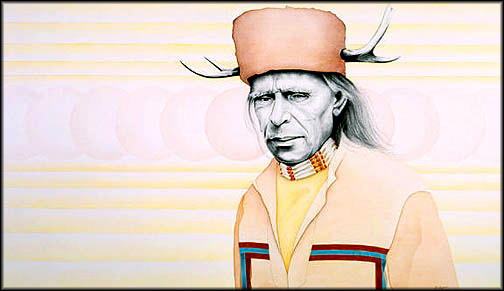The long time Director of Indian Affairs for the state of Massachusetts, a different way is the path of many Native Americans, according to Slow Turtle. What Indian people find of value stems from their tale of creation and the part it plays in how they continuously interpret themselves and the world around them.
Trees have a lot of meaning to the Wampanoag, both in practical terms and in symbolic power. It was a furnisher of food, fire and shelter, and when hollowed out, it provided transportation. The habitat of many animals, the tree also produced oxygen that let all the animals breathe. “But the most important part of the tree,” says Slow Turtle, “is that when the spirit leaves it and goes back to Mother Earth, it creates life once again.” Slow Turtle believes that too many people have lost touch with themselves and their purpose. “When we look a the human being in comparison,” he says, “we must ask, what does he or she contribute, why are they needed, what is their role?”
He tells the story of a crow and a seagull. The Creator made the crow and the seagull for different reasons. The crow was a bird of the forest whose purpose was to warn other animals when danger was near and to keep the forest clean. The seagull was sent to the ocean where he was to keep it clean by feeding on dead fish and warning others of danger. In this parable, the seagull wound up in the forest looking for meat and the crow was on the beach looking for fish, neither one following its purpose and both running into difficulties. Slow Turtle believes that they went off course, like human beings. “Now the water and the air are polluted. The food one must eat has chemicals and preservatives in it. How can one have a clear mind when all the body’s energy is being used to fight off these things?” Slow Turtle asks.
Before his death, he was the chief representative and spokesman for the tribe and publicized the grievances of the Indians and worked to correct them. His office took legislative initiatives in Massachusetts, including the “Act Relative to Certain Skeletal Remains” to protect the sacredness of unmarked Natives graves and burial mounds, and a bill intended to prevent Indian children from being placed in non-Indian foster homes. The first act, signed into law in 1983, has since been scrutinized by Native American organizations throughout the country and by those whose profession is most affected – the archaeologist. Slow Turtle believed that archaeologists needed to be educated. There are signs that they are becoming more sensitive about human remains and sacred artifacts. Karen Cooper of the Institute for American Indian Studies said that the Connecticut organization reinterred some remains under the spiritual officiation of Slow Turtle. Cooper believes that while many of her colleagues are showing far greater respect than before, there are some who remain “very insensitive” to the wishes of the living.
The core of the debate between governments and indigenous minorities is that of land rights. For many tribal people, culture and homeland are not divisible. Slow Turtle believed that the Wampanoag homelands conferred special power to the descendants of the original inhabitants. “Home (Mahspee) is special to me. You’ve got to remember that we are still on our spiritual lands. We’re not like Indians out west who have been removed to reservations. Our connection is much keener.” He was especially concerned with the ecological desecration of Cape Cod because of its vanishing aquifer and the development of land formerly under agriculture. Unlawful taking of Indian lands is like “someone stealing you car,” according to Slow Turtle. “You stole my car because your kid liked it. Now you’ve fixed it up and you’ll never give it back – maybe you’ll return the hubcaps.”
He recounted a story about his first week in school. The first day he pledged allegiance to the flag of the United States of America. When he returned the second day, he had to do it again, and on and on, day after day, each morning pledging allegiance. “I thought, every 24 hours I have to say the pledge again? These people must not keep their word if their allegiance only last twenty-four hours.” In a country where “the land, the air and the water is dirty and every child born is in debt,” Slow Turtle lived his life on a set path, which was to prepare the earth for the next seven unborn generations.
“When I first met Slow Turtle,” says Gerry, “we spoke at some length and the feeling I got from him is not easily expressed in words. We got together on several occasions and throughout the course of our conversations I could sense the universal time frame around us change, almost as if he were bending the space-time continuum with his energy. This is the aspect of him that I attempted to capture in his portrait.”
